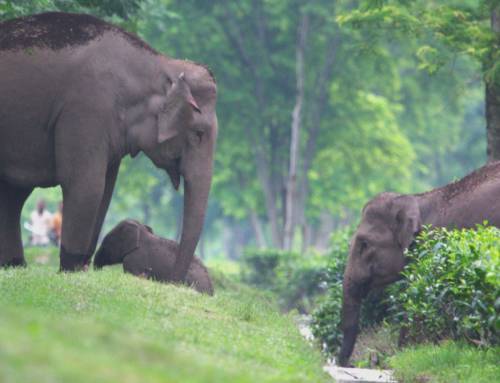Research Article: Karanth, K. K. (2016). Wildlife in the matrix: spatio-temporal patterns of herbivore occurrence in Karnataka, India. Environmental Management, 57 (1), 189-206
Blog Author: Shreya Ray
Key Highlights:
- A large-scale survey spanning about 7500 sq. km surrounding five protected reserves reveals the distribution of elephant, gaur, sambar, chital, and pig outside protected areas
- Distance to reserve, the reserve itself, and forest cover were associated with a higher presence of all species
- Higher densities of people was negatively related to the presence of all species
- Elephant had a higher presence outside protected areas during the wet season, while chital had a higher presence during the dry season
- Noticeably higher elephant presence coincides with crop harvest season in this landscape
The Western Ghats is among the five biodiversity hotspots of the world, and one of the only two in India. There is a high density of small reserves in this region, and due to the ideal climatic conditions, there is a high density of people in and around as well. A total of 70 protected areas in the Western Ghats support many species of herbivores and carnivores such as elephants, gaur, sambar, tigers, leopards, dholes, and others. But are these species only restricted to these designated areas?
Animals are oblivious to human-made boundaries and often venture out of these protected areas looking for water, food, and mates. Herbivores often come close to villages to raid nutrient-rich crops and readily available water sources. However, this convenience comes with its own challenges for these herbivores, such as direct conflict with humans resulting in persecution or being hunted for meat and body parts. There is also the risk of transmission of diseases, such as anthrax, from domestic cattle. Therefore, it is crucial to understand where these animals are present and how to manage them.
In this study, Dr. Krithi K. Karanth from the Center for Wildlife Studies, India, sampled a vast area of the Western Ghats to undestand wildlife space-use outside protected areas and what determines them. Field teams surveyed an area of 7500 sq. km to find out the presence or absence of herbivores. The study focused around five protected areas in Karnataka: Dandeli-Anshi National Park, Bhadra Wildlife Sanctuary, Nagarahole National Park, Bandipura National Park, and Biligiri Rangaswamy Temple Wildlife Sanctuary. This was supplemented by 3860 structured interviews with the villagers in these areas to find out the presence or absence of 18 large mammal species during the dry and wet season of 2011. They gathered information on elephant, gaur, sambar, chital and pig.
Using this information, Dr. Karanth examined how landscape, environment and people influence where and when these herbivores are found. She found that herbivore distribution in the Western Ghats was influenced by population density, distance to the closest reserve, forest cover, elevation and the reserves themselves. Elephants aggregated outside protected areas more during the wet seasons, which coincided with the crop harvest time and chital were found to be present more often in dry seasons.
Resources inside the small percent of protected areas are likely to be insufficient to support large population of herbivores. And, croplands form a more accessible and nutritional source of resource, leading to close contact between herbivores and humans. Measures need to be taken to encourage co-existence between wildlife and humans in such regions. Dr. Karanth’s paper provides a first of its kind insight on ‘where and when’ of the presence of these species from the Western Ghats landscape. Keeping their areas of occurrences in mind, the establishment of eco-sensitive zones and the monitoring of wildlife in these areas can ensure long-term coexistence of these herbivores and people in the same landscape.
Key words: Biodiversity, India, herbivores, people, outside protected areas, wildlife, elephant, gaur, chital, sambar, pig, Western Ghats
You can access the original article here.




